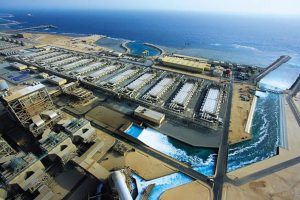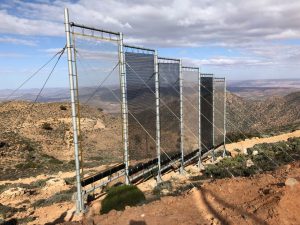As business owners, there is a lot to consider when mapping out future retirement and succession plans. Between 401(k)s, Individual Retirement Arrangements (IRAs), Employee Stock Ownership Plans (ESOPs) and other similar options, weighing the advantages and disadvantages of each one is critical. While plans such as 401(k)s and IRAs are most common, there is still a large knowledge gap when it comes to ESOPs – and because of this, the ESOP option frequently gets overlooked or viewed as a ‘last-resort.’

With that said, let’s dive into some of the great benefits that ESOPs bring to both employers and employees, and discuss why ESOPs should truly be viewed as a first-resort.
For starters – what is an ESOP?
To keep it simple, companies that launch an ESOP form a trust that purchases some or all of the company’s shares and holds them in retirement accounts for employees. As the stock value increases or decreases over time, so too does the value of the employees’ accounts.
The two main reasons why ESOPs are such beneficial alternatives to the other succession plans out there are as follows:
- ESOPs increase employee engagement, thus improving the company’s overall performance
- ESOPs offer potentially compelling benefits at the time of sale
Employee Engagement
In terms of employee engagement, studies have shown that employees who participate in an ESOP are more motivated to perform at a higher level than those who do not participate in an ESOP. Research in a study conducted on the effects of ESOP adoption and employee ownership at the University of Pennsylvania showed that individual employee-owners have increased job satisfaction, organizational commitment, motivation and workplace participation. Employee ownership has also been shown to result in increased firm productivity, profitability and longevity. In the largest study on the performance of employee stock ownership plans, Joseph Blasi and Douglas Kruse found that overall, productivity increased by 4% in companies who participate in an ESOP. The National Center for Employee Ownership also found that on average, employee-owners have retirement accounts that are 2.2x larger than those in traditionally owned companies.

Compelling Benefits
The second reason why ESOPs are a great option for business owners is the increased optionality. When the time comes to sell a business, ESOPs give business owners more than one solution to a very complex situation. One example of this can be seen through the decision Dansko, a popular manufacturer of shoes, made to become an employee owned company. When owner Mandy Cabot made the decision to sell her company, she was presented with an offer from Timberland, another massive name in the industry. While the deal offered an attractive price tag and additional benefits like added R&D for Dansko, ultimately Mandy sold her shares to an ESOP. Instead of an outside company running her business, the employee owners who have been ingrained in Dansko’s roots for so long, will continue on with their original commitment to employees, community, and values.
“In any business, employees are the life-blood, they ARE the business,” Mandy said. “Through our employees, Dansko will learn, evolve, and regenerate itself virtually forever.”
Misconceptions of ESOPs
With these benefits laid out on the table, what then gets in the way of owners looking to implement this viable option? Here are some of the major misconceptions surrounding ESOPs:
- An owner may not get fair market value by selling to an ESOP – It is true that an ESOP cannot pay MORE than a business’ fair market value – thus, an owner will not be walking away with an offer from the highest bidder. However, the ESOP can pay every dollar of fair market value determined by a market evaluation exercise.
- Owners lose operating control of their companies when they create an ESOP – This is also not true. While employee-owners will observe management decisions and strategies to grow the value of the company, ESOP members don’t manage operations.
- ESOPs are too complex – Although there are more nuances when it comes to setting up an ESOP, ESOPs are structured under U.S. law as an employee retirement plan. There are many financial advisors out there who are experts on the ins and outs of ESOPs.
In the end, some retirement options may be better suited for certain companies and firms – but at the least, be sure to evaluate the tangible benefits of an ESOP.

Tata & Howard adopted an Employee Stock Ownership Plan in October of 2014 to ensure future success of the company. As a result, Tata & Howard employees own 100% of the company through their ESOP. Since becoming an ESOP company, Tata & Howard still upholds the same core mission and values of teamwork, efficient solutions, client satisfaction, integrity, and positive attitude, originally established more than 27 years ago.


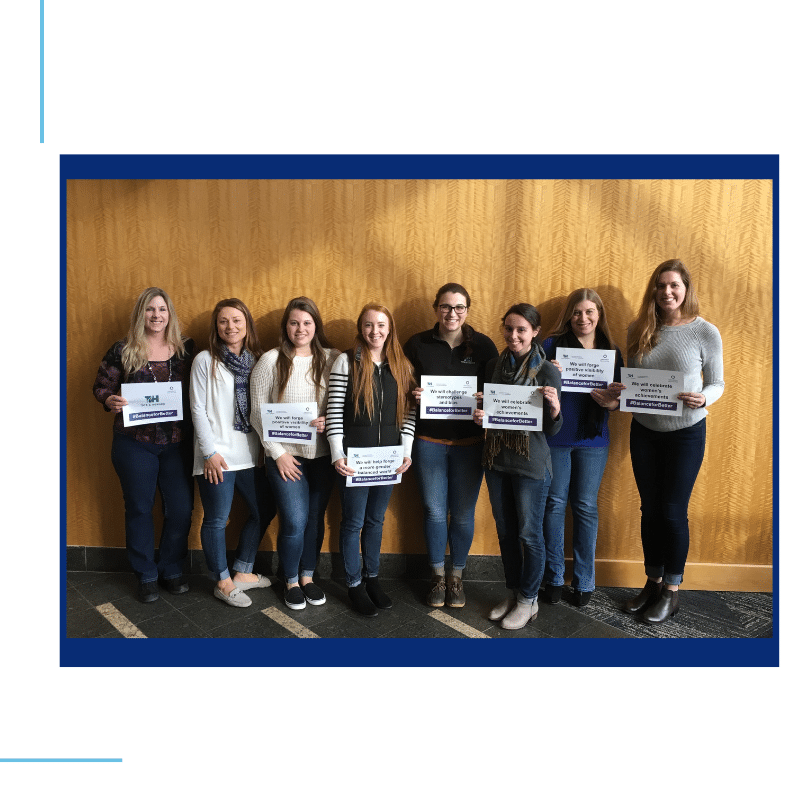
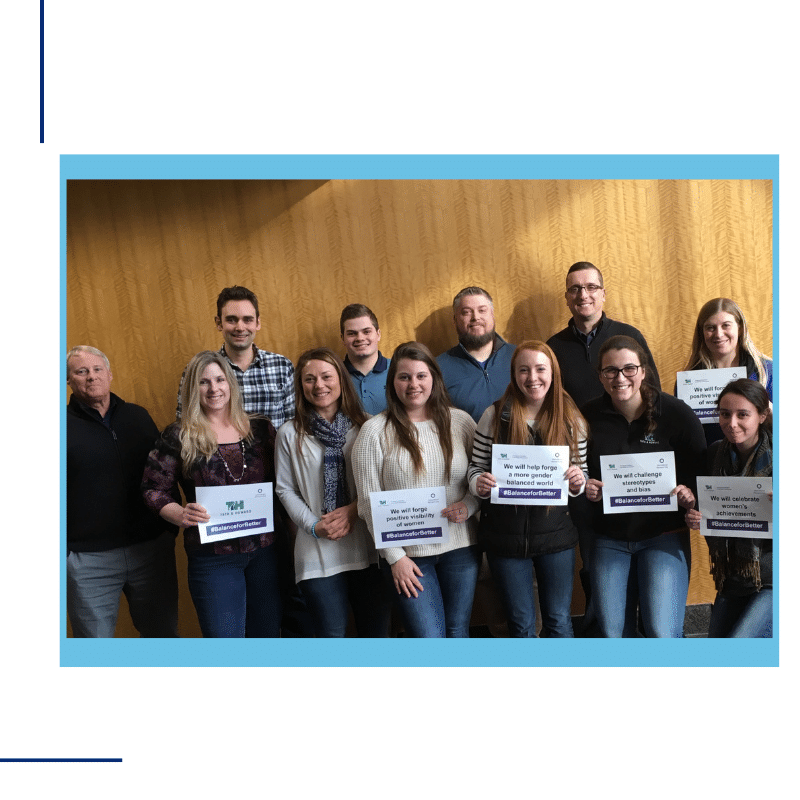
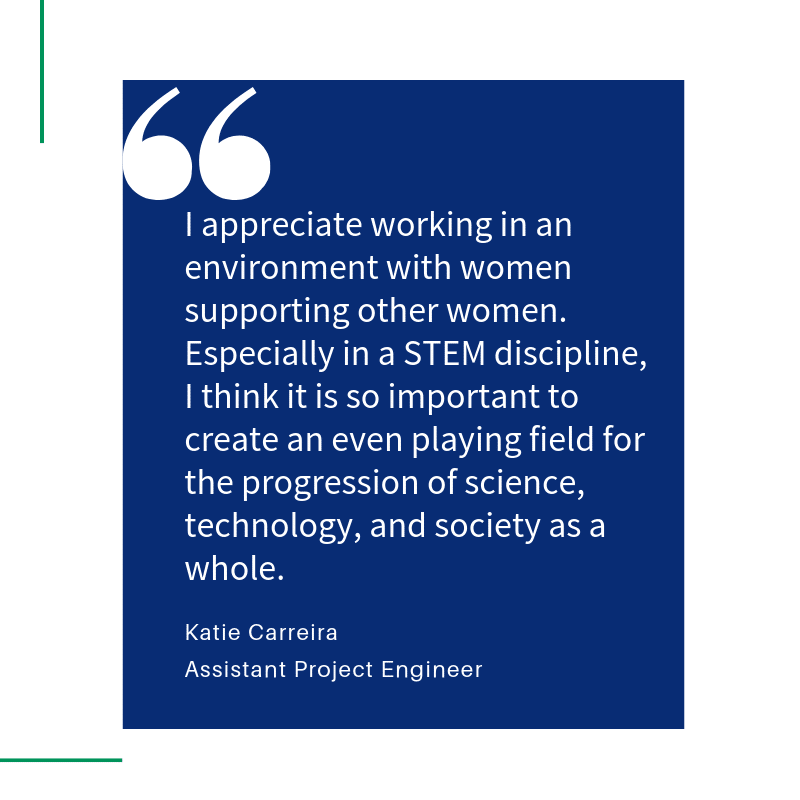
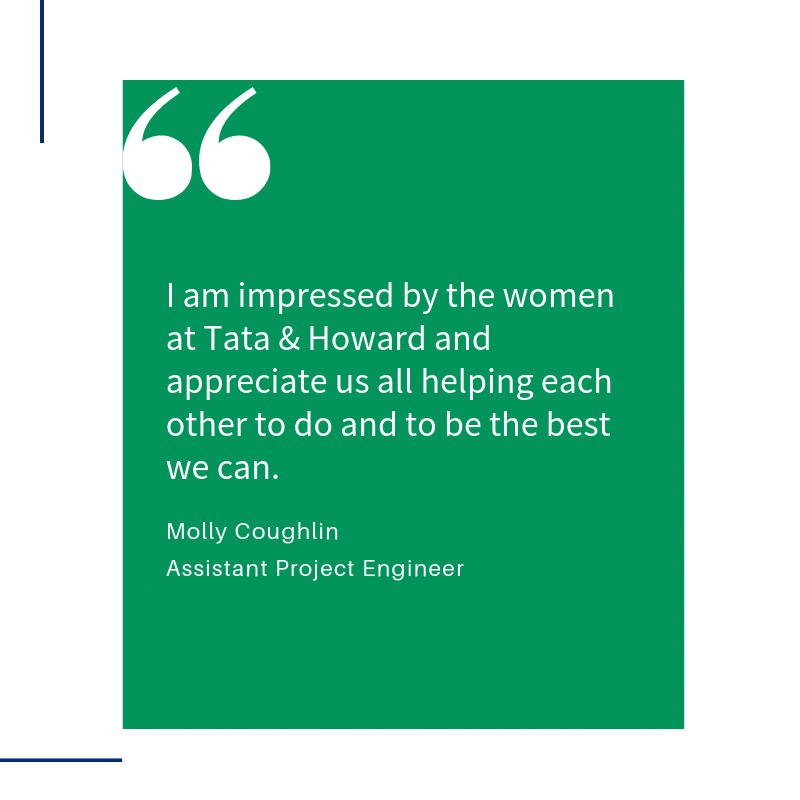
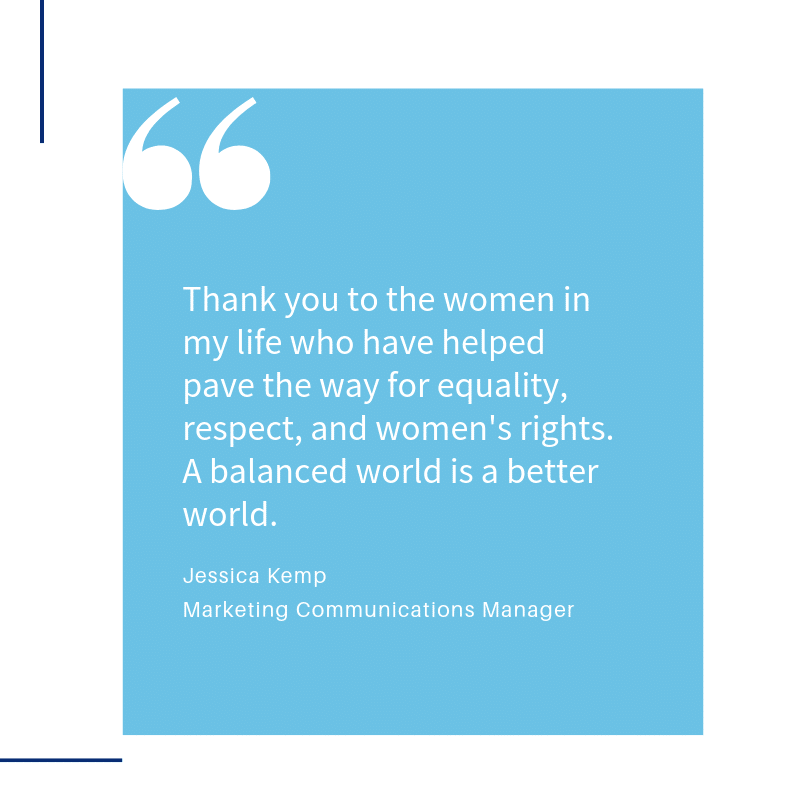
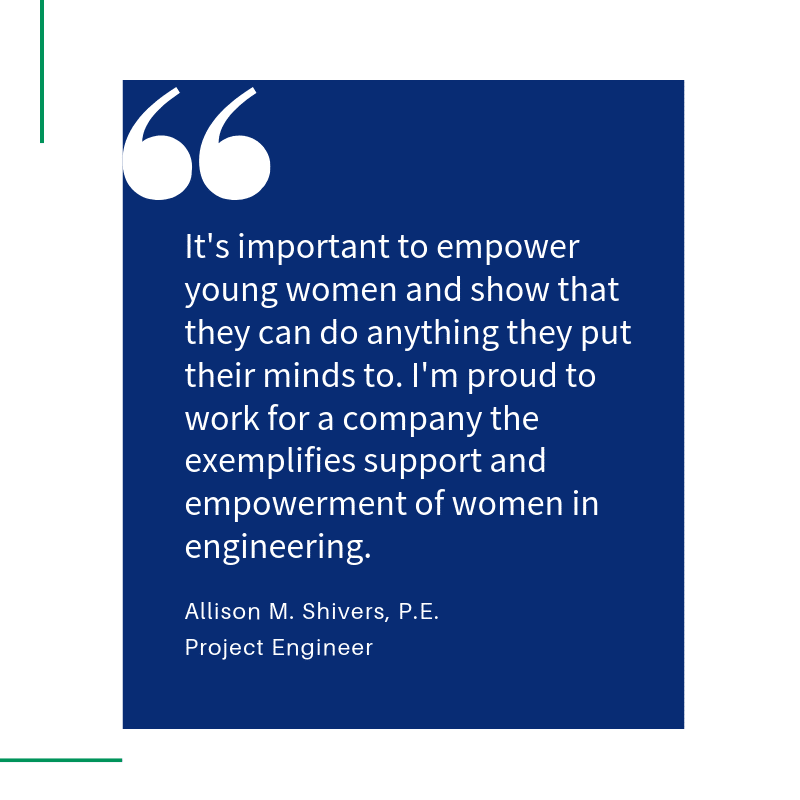
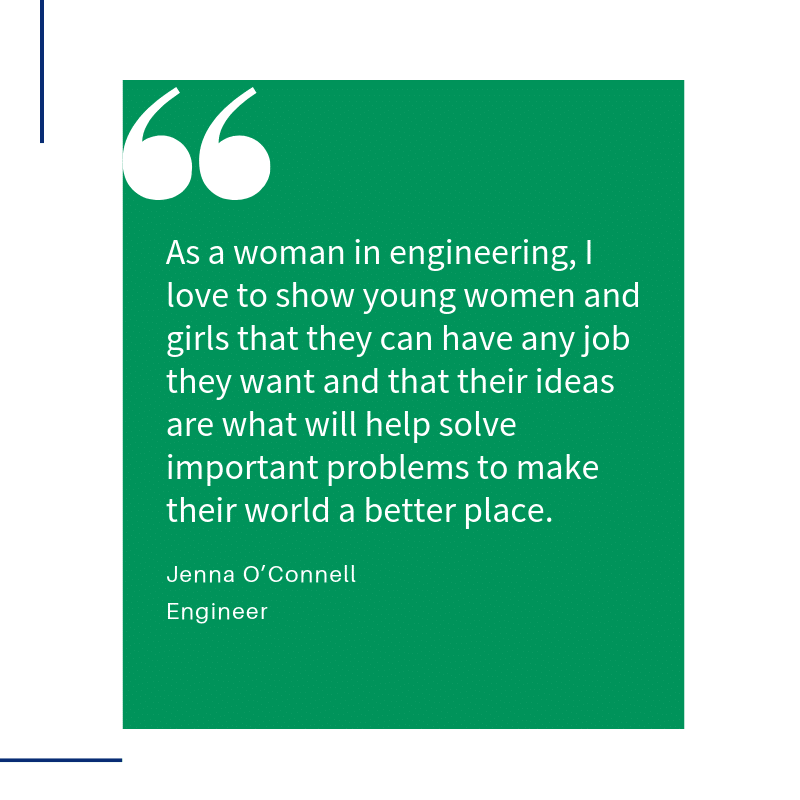
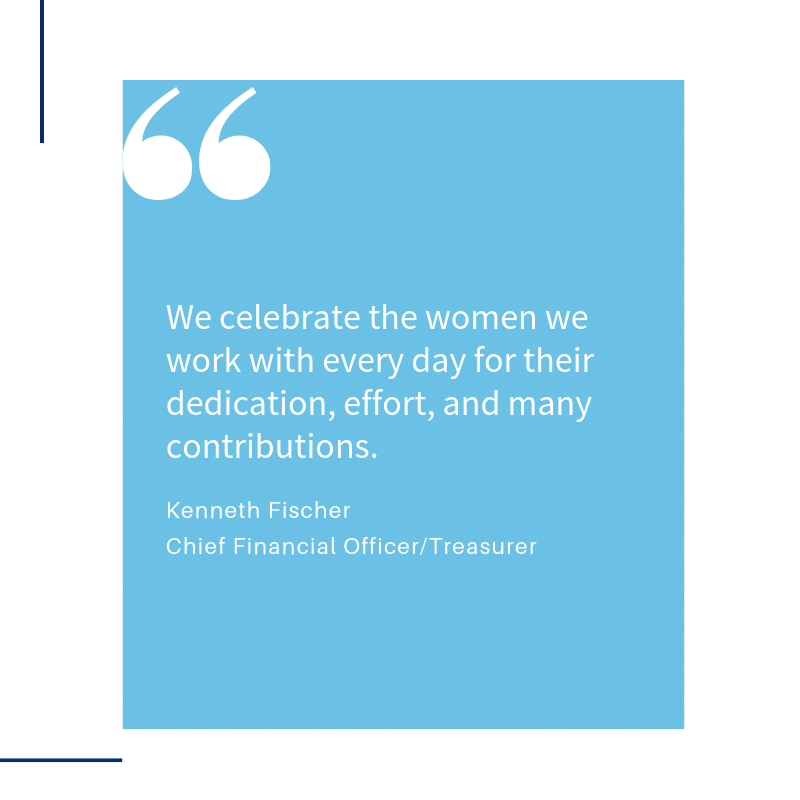
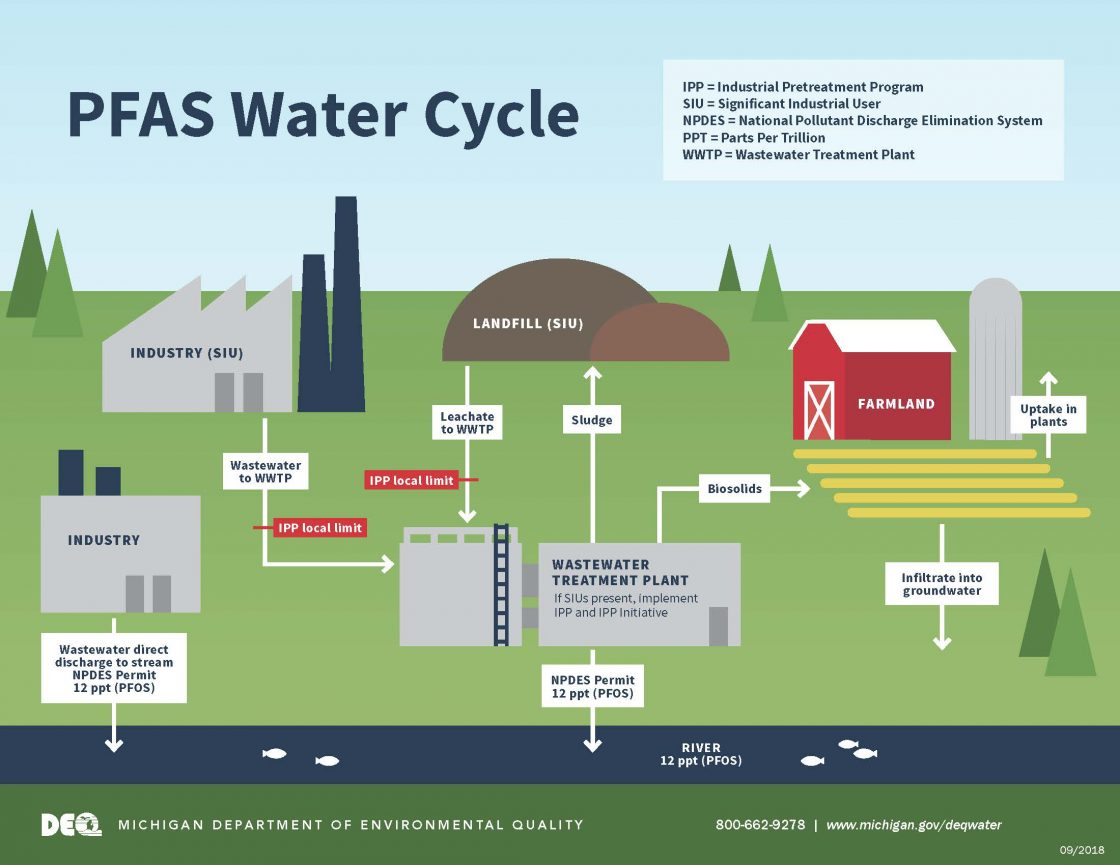
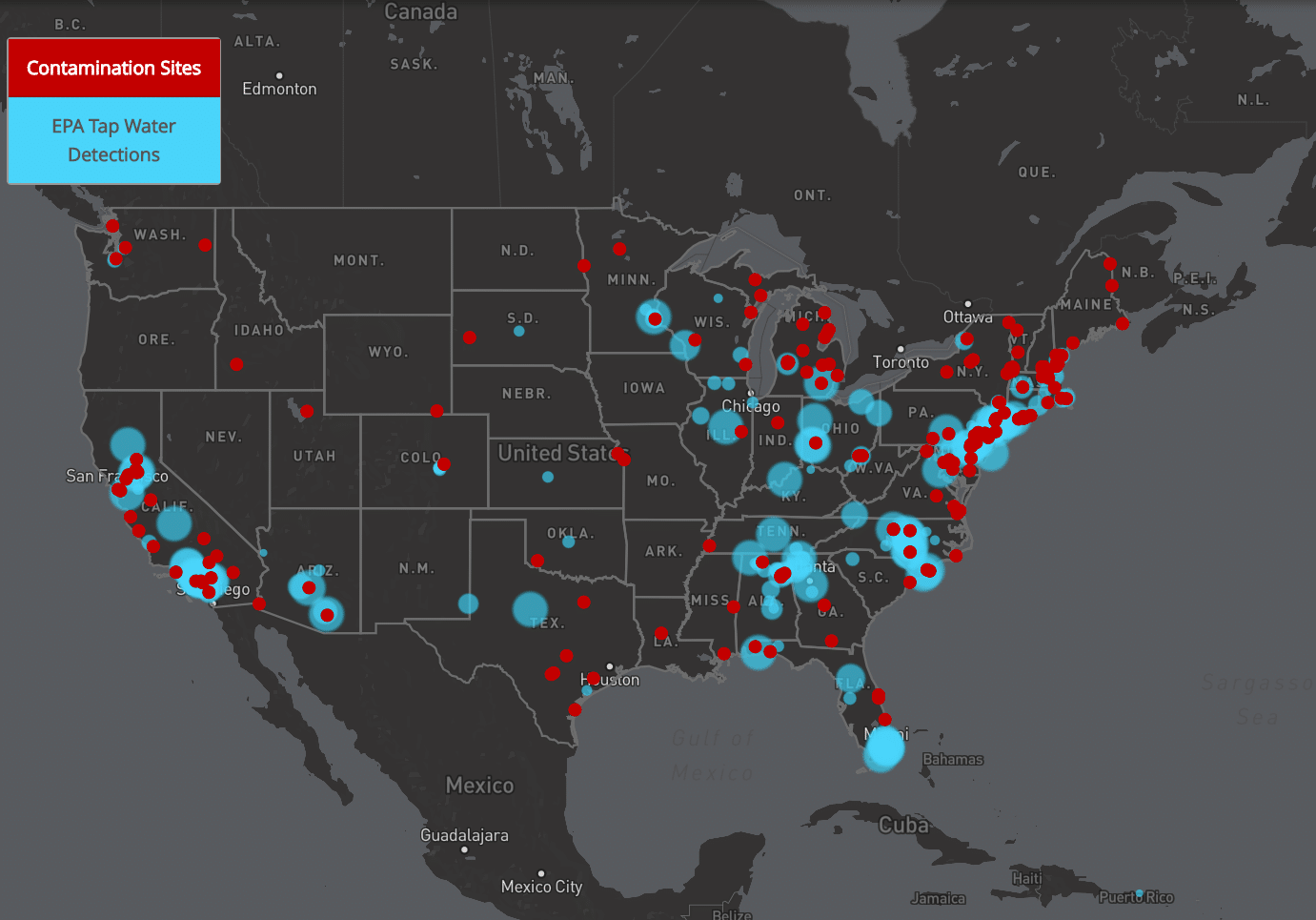
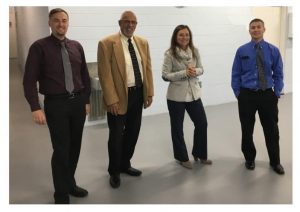
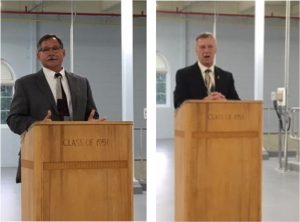

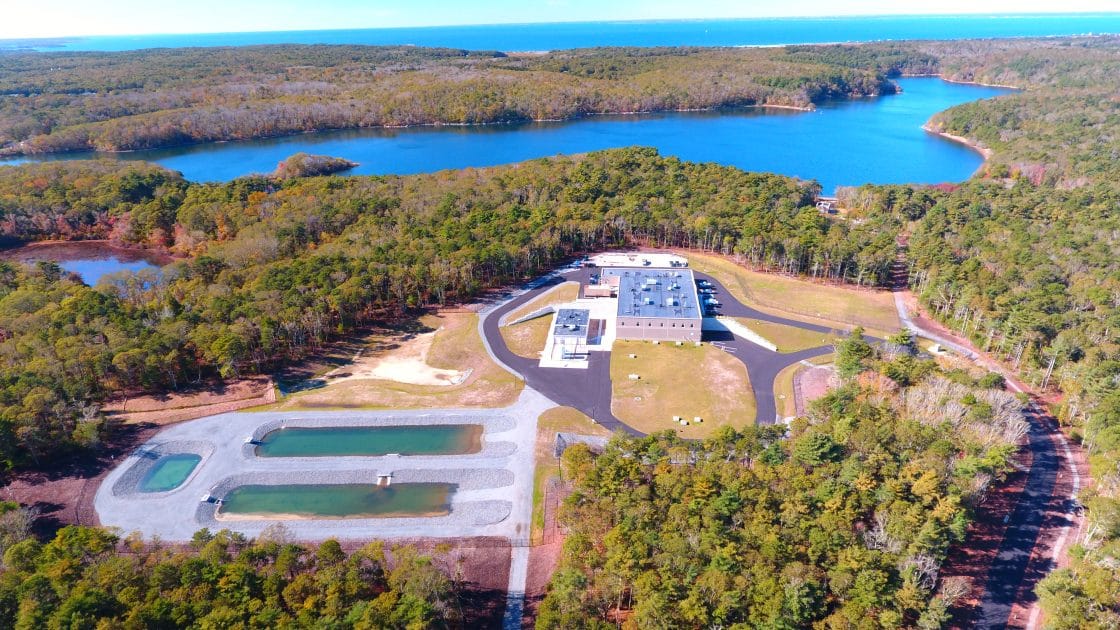
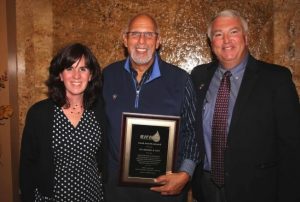
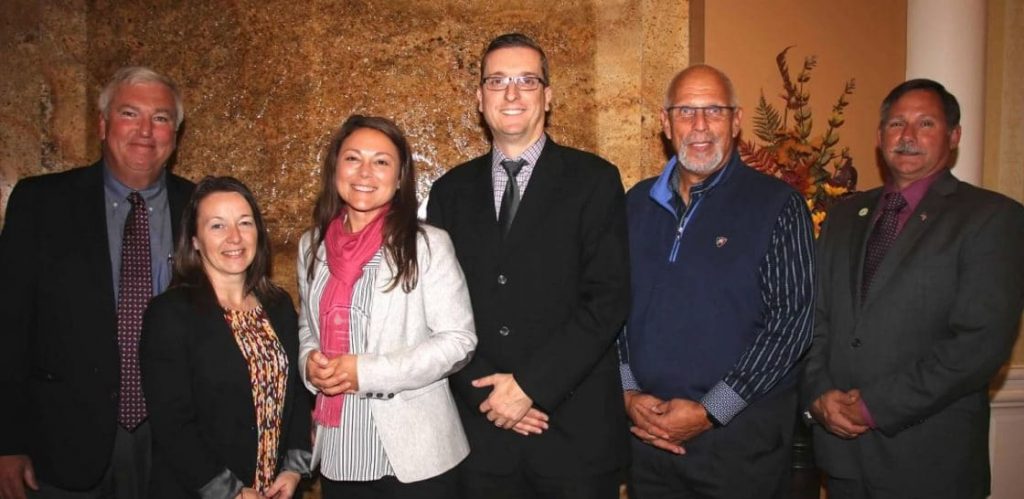
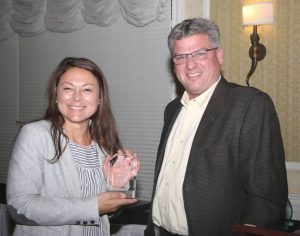
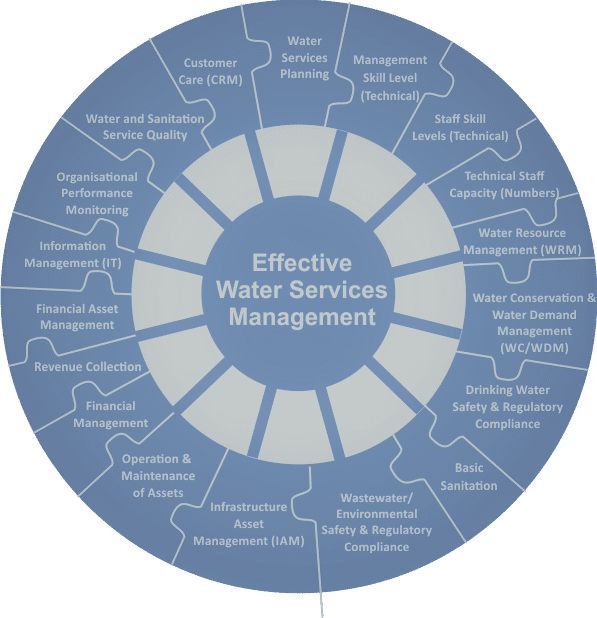 Emergency Response Plans (ERPs) are mandatory for all public water suppliers, and a minimum of 10 hours of Emergency Response Training is required. ERP training is a process that helps water system managers and staff explore vulnerabilities, make improvements, and establish procedures to follow during an emergency. Preparing and practicing an ERP can save lives, prevent illness, enhance system security, minimize property damage, and lessen liability.
Emergency Response Plans (ERPs) are mandatory for all public water suppliers, and a minimum of 10 hours of Emergency Response Training is required. ERP training is a process that helps water system managers and staff explore vulnerabilities, make improvements, and establish procedures to follow during an emergency. Preparing and practicing an ERP can save lives, prevent illness, enhance system security, minimize property damage, and lessen liability.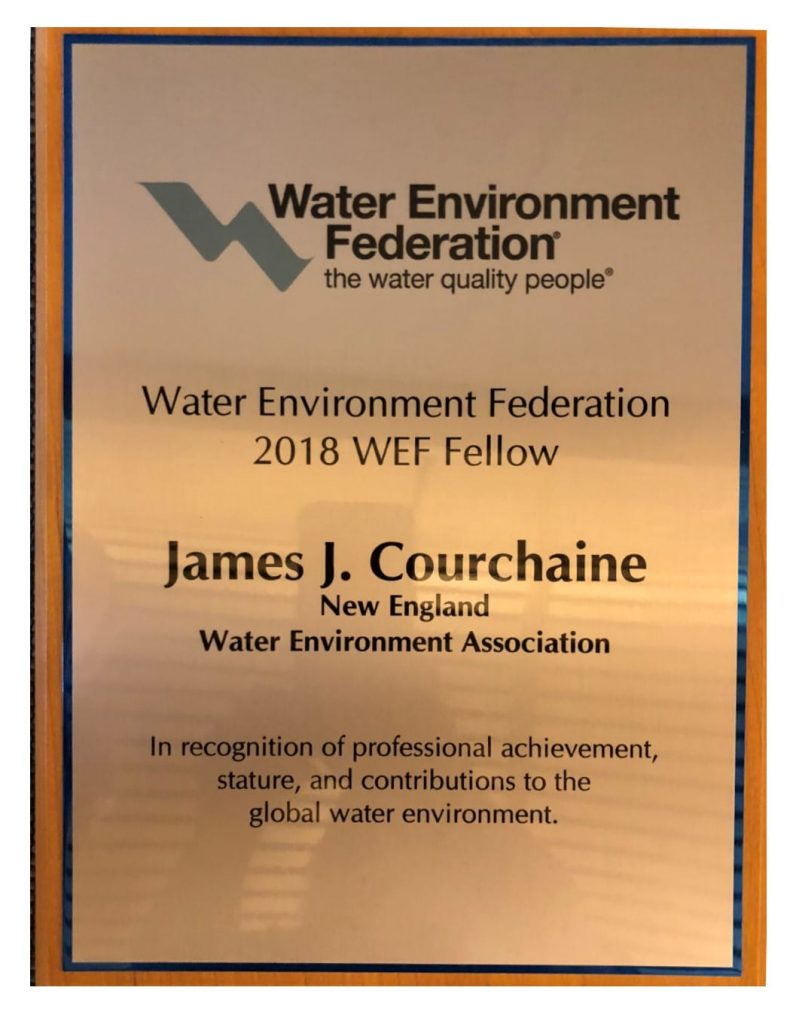
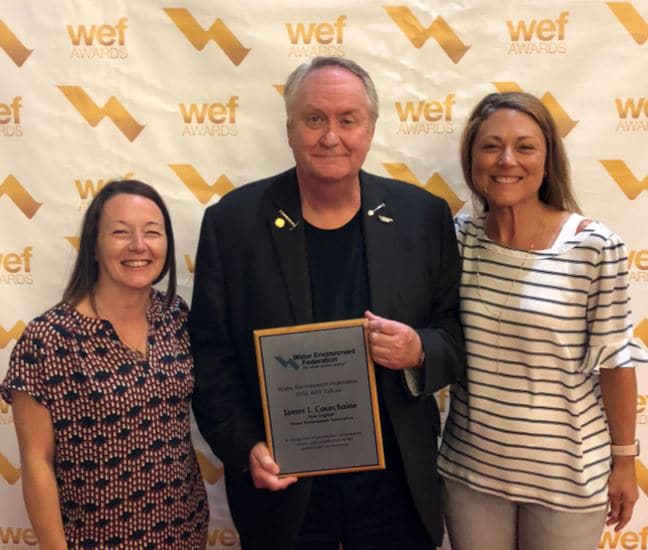
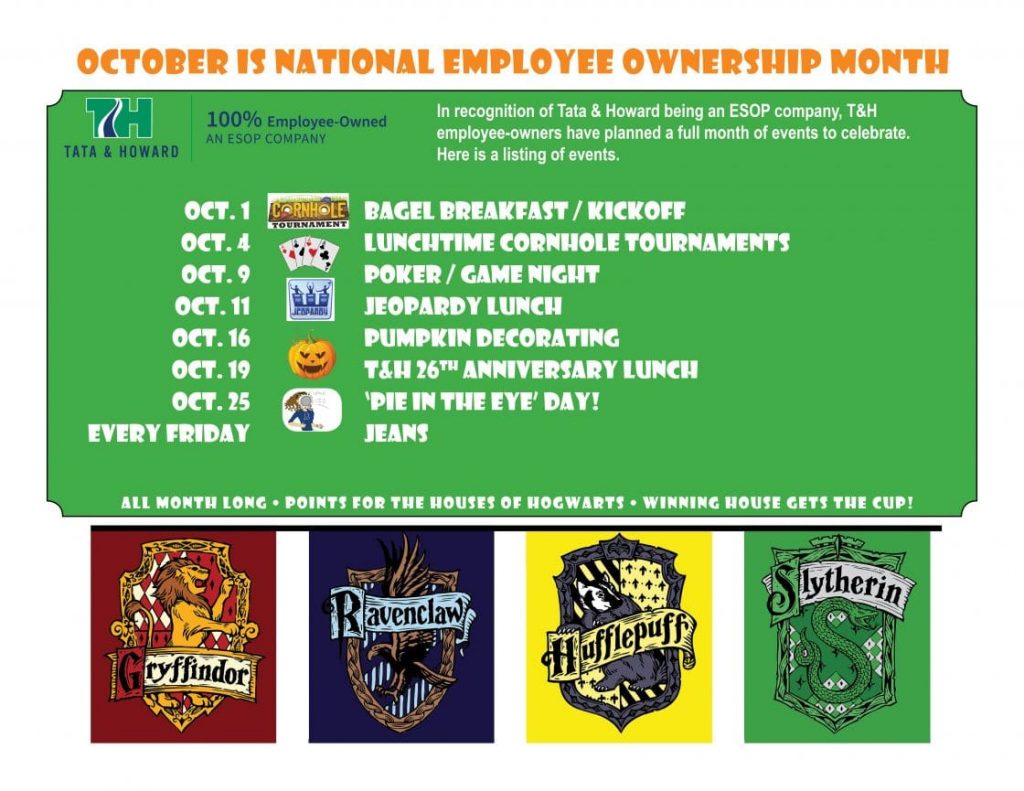 T&H kicked off EOM with our Employee Breakfast & Presentation on October 1st. We are encouraging our employees to participate in weekly hosted games and activities to gain points for their teams – which will be modeled after the Houses of Harry Potter’s Hogwarts School. The House with the most points at the end of the month will win the House Cup! Other fun activities include a cornhole tournament, poker night, lunchtime Jeopardy, pumpkin decorating, the firm’s Anniversary Lunch, and wrapping up with the Pie in the Eye Day.
T&H kicked off EOM with our Employee Breakfast & Presentation on October 1st. We are encouraging our employees to participate in weekly hosted games and activities to gain points for their teams – which will be modeled after the Houses of Harry Potter’s Hogwarts School. The House with the most points at the end of the month will win the House Cup! Other fun activities include a cornhole tournament, poker night, lunchtime Jeopardy, pumpkin decorating, the firm’s Anniversary Lunch, and wrapping up with the Pie in the Eye Day.

 The most alarming news is the hottest temperature ever reliably recorded reached 124.3 degrees in Algeria this July.
The most alarming news is the hottest temperature ever reliably recorded reached 124.3 degrees in Algeria this July. Wastewater treatment plants that use aerobic bacteria must provide oxygen with huge and costly electrically powered blowers for these microorganisms to survive. Anaerobic bacteria treatment processes do not need oxygen and use considerably less energy, making the wastewater treatment process more economical to operate. In addition to saving money, engineers believe these anaerobes can filter household and industrial chemicals better than conventional treatment plants.
Wastewater treatment plants that use aerobic bacteria must provide oxygen with huge and costly electrically powered blowers for these microorganisms to survive. Anaerobic bacteria treatment processes do not need oxygen and use considerably less energy, making the wastewater treatment process more economical to operate. In addition to saving money, engineers believe these anaerobes can filter household and industrial chemicals better than conventional treatment plants.